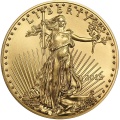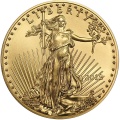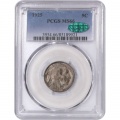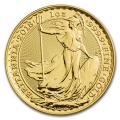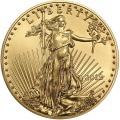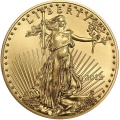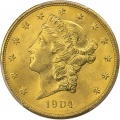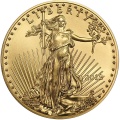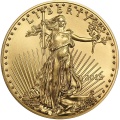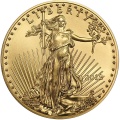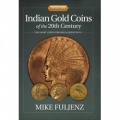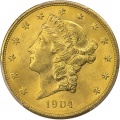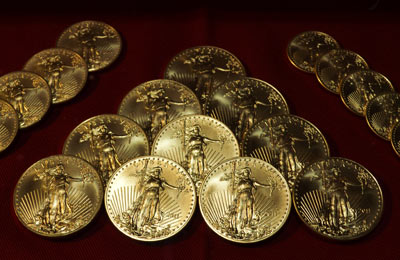August 2021 - Week 3 Edition
Gold Rises Again
Gold corrected itself on Friday, August 6th with a strong jobs report, but then recovered even stronger in the following week. A strong jobs report led some nervous traders to fear the Federal Reserve might raise interest rates or stop Quantitative Easing (QE) sooner than expected. Over the weekend, from August 7-8, gold dipped to $1,680 per ounce at one point, a four-month low. Silver also fell and hit $22.30, but both precious metals recovered the following week. Gold added back about $110 or roughly 90 percent of its losses to $1,789 on Monday morning, August 16.
Consumer Price Inflation Remained at a 13-Year High in July
The U.S. Department of Labor released the July Consumer Price Index on Wednesday and the pace remained at the same 13-year high set in June, at +5.4% over the last 12 months – higher than the 4.4% rate of CPI growth when President Nixon imposed 90-day wage and price controls 50 years ago, this week!
Using the precepts of “Modern Monetary Theory” (MMT), the Fed has flooded the nation with liquidity while keeping interest rates near zero since shortly after the beginning of the COVID-19 threat nearly 18 months ago. The Fed is flooding financial markets with $120 billion per month in emergency bond purchases, thereby doubling its balance sheet, on top of massive multi-trillion-dollar Congressional spending.
On Thursday, the Producer Price Index (PPI) will be released, focusing on commodities and primary products from agricultural to mining commodities. The PPI is generally considered to be an advance indicator of future increases in consumer prices since these components make up the cost of production.
Some of the largest commodity price increases year-to-date are in industrial metals, energy and food (The latter two are subtracted from the CPI and PPI to compute core inflation rate).

The major commodity indexes are up 28%+ cumulative to this year. The CRB index is up 28.3% and the S&P GSCI commodity index is up 28.8%. Only the precious metals are lagging – but they were the leaders in 2020.
The Federal Reserve claims this inflation is “transitory,” but commodity prices are a leading indicator of future consumer price inflation. These sharply rising prices show that consumer prices should rise more about six to nine months from now. In addition, wages have risen 4% in the past year and they are rising faster now as millions of job openings are going begging. Many workers seem to be on strike as the Biden Administration is paying workers to stay idle, at least through Labor Day, and probably beyond, with generous unemployment benefits on top of state benefits for not working.
Deficit spending and fed policy guarantee inflation is not going away any time soon.
The 50th Anniversary of Gold / Dollar “Divorce”
On Sunday night, August 15, 1971, President Richard Nixon not only devalued the U.S. dollar by about 17% to gold but he virtually abandoned what little was left of the gold standard by closing the gold window to foreign governments. American investors were already forbidden from owning most forms of gold and foreign governments were also forbidden from trading their dollars for a fixed weight in gold.
President Nixon also instituted a 90-day wage and price freeze – very hard to enforce – despite the fact the most recent annualized Consumer Price Index rate was only 4.4%, less than today’s most recent rate. He also boosted tariffs by 10% and added a series of other financial plans to stimulate the economy.
The public loved most of Nixon’s nostrums. The public didn’t really know much about the gold standard, but they loved the idea of price freezes and tariffs against imports. Wall Street celebrated with a huge rise in the Dow Jones index on Monday, August 16th, 1971. Economists mostly praised Nixon’s wisdom in crafting this package.
Polls by both Gallup and Sindlinger & Co found that 75% approved of Nixon’s ideas. Albert Sindlinger said that “most of those who dissented did so on the ground that Mr. Nixon’s actions should have come sooner,” adding that “In all the years I’ve been in this business…I’ve never seen anything this unanimous, unless maybe it was Pearl Harbor.” Economists were almost all unanimous, with Paul Samuelson – the author of the most popular economics textbook – saying that gold would likely fall in price, and Milton Friedman telling Nixon that severing gold from the dollar would have little impact on the dollar’s value.
Nixon believed Friedman, so Nixon said in his speech that abandoning gold would either strengthen or stabilize the dollar. That did not happen. The dollar lost two-thirds of its value to the German mark, Swiss franc and Japanese yen, and it also lost 98% of its purchasing power to gold over the next 40 years.
- The Japanese fought hard to hold the yen to 360 per dollar but Japan eventually had to let the yen float on August 27, 1971. The rate dropped to 260 per dollar within a year, then to 180 by 1978 – down 50%. The yen/dollar rate fell to 80 by 1995 – so the dollar fell by 78% in less than 25 years.
- The Swiss franc tripled from 1971 to 1978, rising from $0.23 to $0.67, and now it’s up to $1.09.
The dollar’s biggest decline, however, came in terms of gold. Even with gold’s recent drop and the recent rally in stocks to new highs, gold has beaten stocks long-term and has beaten inflation 8.5-fold.

Most of gold’s increase came in the first decade of the dollar float, from 1971 to 1980, but gold also grew 7-fold from 2001 to 2011 – and it doubled again from lows in late 2015 to peak in August 2020.
Gold has its ups and downs – and skeptics can always pick their dates to make gold’s growth look flat – but it has beaten all paper currencies over the past 50 or 100 years by a wide margin. Although gold has beaten the major stock market averages gold’s primary role is to beat paper currencies (and bonds), but it can also be a stock portfolio hedge.
The official gold standard may be long gone, but the unofficial gold standard lives on, with individual investors disciplining central bankers by balancing their portfolios with real money, the golden constant.
Important Disclosure Notification: All statements, opinions, pricing, and ideas herein are believed to be reliable, truthful and accurate to the best of the Publisher's knowledge at this time. They are not guaranteed in any way by anybody and are subject to change over time. The Publisher disclaims and is not liable for any claims or losses which may be incurred by third parties while relying on information published herein. Individuals should not look at this publication as giving finance or investment advice or information for their individual suitability. All readers are advised to independently verify all representations made herein or by its representatives for your individual suitability before making your investment or collecting decisions. Arbitration: This company strives to handle customer complaint issues directly with customer in an expeditious manner. In the event an amicable resolution cannot be reached, you agree to accept binding arbitration. Any dispute, controversy, claim or disagreement arising out of or relating to transactions between you and this company shall be resolved by binding arbitration pursuant to the Federal Arbitration Act and conducted in Beaumont, Jefferson County, Texas. It is understood that the parties waive any right to a jury trial. Judgment upon the award rendered by the Arbitrator may be entered in any court having jurisdiction thereof. Reproduction or quotation of this newsletter is prohibited without written permission of the Publisher.

